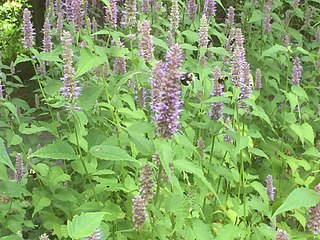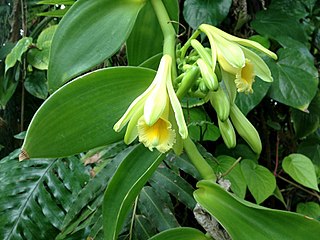 W
WPollination management is the label for horticultural practices that accomplish or enhance pollination of a crop, to improve yield or quality, by understanding of the particular crop's pollination needs, and by knowledgeable management of pollenizers, pollinators, and pollination conditions.
 W
WAlfalfa, also called lucerne, is a perennial flowering plant in the legume family Fabaceae. It is cultivated as an important forage crop in many countries around the world. It is used for grazing, hay, and silage, as well as a green manure and cover crop. The name alfalfa is used in North America. The name lucerne is the more commonly used name in the United Kingdom, South Africa, Australia, and New Zealand. The plant superficially resembles clover, especially while young, when trifoliate leaves comprising round leaflets predominate. Later in maturity, leaflets are elongated. It has clusters of small purple flowers followed by fruits spiralled in 2 to 3 turns containing 10–20 seeds. Alfalfa is native to warmer temperate climates. It has been cultivated as livestock fodder since at least the era of the ancient Greeks and Romans. Alfalfa sprouts are a common ingredient in dishes made in South Indian cuisine.
 W
WThe almond is a species of tree native to Iran and surrounding countries but widely cultivated elsewhere. The almond is also the name of the edible and widely cultivated seed of this tree. Within the genus Prunus, it is classified with the peach in the subgenus Amygdalus, distinguished from the other subgenera by corrugations on the shell (endocarp) surrounding the seed.
 W
WThe Apiary Laboratory, more often referred to as the Apiary, is a research laboratory at the University of Massachusetts Amherst. Originally built for the study of honey bees and apiculture, today it is primarily used to study native pollinator species and the chemicals and pathogens impacting their populations. This academic building is unique in that it is credited as being the first in the United States to be erected exclusively for the teaching of beekeeping.
 W
WPlant breeding is the science of changing the traits of plants in order to produce desired characteristics. It has been used to improve the quality of nutrition in products for humans and animals. The goals of plant breeding are to produce crop varieties that boast unique and superior traits for a variety of agricultural applications. The most frequently addressed traits are those related to biotic and abiotic stress tolerance, grain or biomass yield, end-use quality characteristics such as taste or the concentrations of specific biological molecules and ease of processing . Plant breeding can be accomplished through many different techniques ranging from simply selecting plants with desirable characteristics for propagation, to methods that make use of knowledge of genetics and chromosomes, to more complex molecular techniques. Genes in a plant are what determine what type of qualitative or quantitative traits it will have. Plant breeders strive to create a specific outcome of plants and potentially new plant varieties.
 W
WDate palms are cultivated in Sudan from the Egyptian border in the North all the way along the Nile south of Khartoum until Sennar. In addition to the banks of the Nile, isolated occurrences of cultivated date trees occur in the Red Sea Hills in the vicinity of Port Sudan, in Kassala, along the Atbara River, in the deserts around Dongola and far Southwest in Darfur, for example in Wadi Kutum, Wadi Mellit and Barra. In all these locations, the palm trees depend on accessible ground water or on irrigation. The water for irrigation is either taken from wells or from the river Nile, where it is nowadays provided by diesel pumps. Sudan is among the countries that produce good quality dates. Bilad al-Mahas, Sukut, Dongola, Dar al-Shaiqiyah, Dar al-Manasir, Dar al-Rubatab and the areas around Bauqah and Berber along the Nile boast extensive date groves. In each date growing region a particular composition of palm tree varieties, including endemic species, are grown. During the Anglo-Egyptian Condominium (1899—1955), Dar al-Manasir had been described as the southernmost limit of date cultivation in the Sudan
 W
WDr John Garton, of the firm of Garton Brothers of Newton-le-Willows in the United Kingdom was the Originator of Scientific Farm Plant Breeding. He is credited as the first scientist to show that the common grain crops and many other plants are self-fertilizing. He also invented the process of multiple cross-fertilization of crop plants.
 W
WA pollinator garden is planted and designed, with specific nectar and pollen producing plants, in a way that attracts pollinating insects known as pollinators. In order for a garden to be considered a pollinator garden, it should provide the following: various nectar producing flowers, shelter or shelter providing plants for pollinators, avoid the use of pesticides, and place similar flowers close to one another.
 W
WVanilla is a spice derived from orchids of the genus Vanilla, primarily obtained from pods of the Mexican species, flat-leaved vanilla (V. planifolia). The word vanilla, derived from vainilla, the diminutive of the Spanish word vaina, is translated simply as "little pod". Pre-Columbian Mesoamerican people cultivated the vine of the vanilla orchid, called tlīlxochitl by the Aztecs.